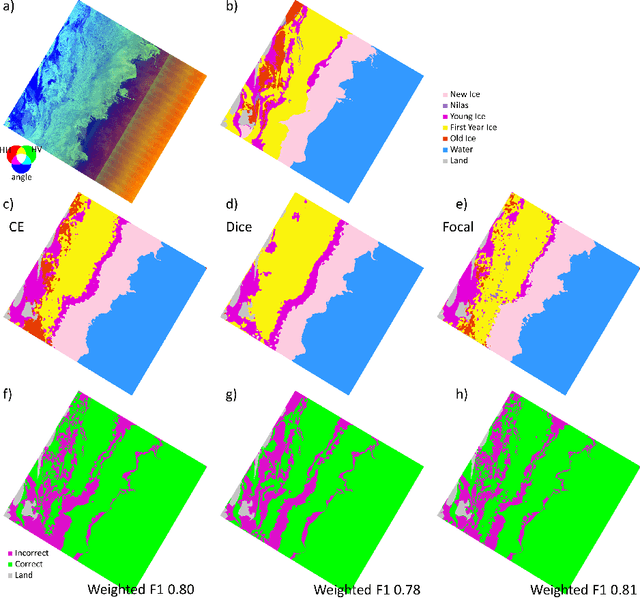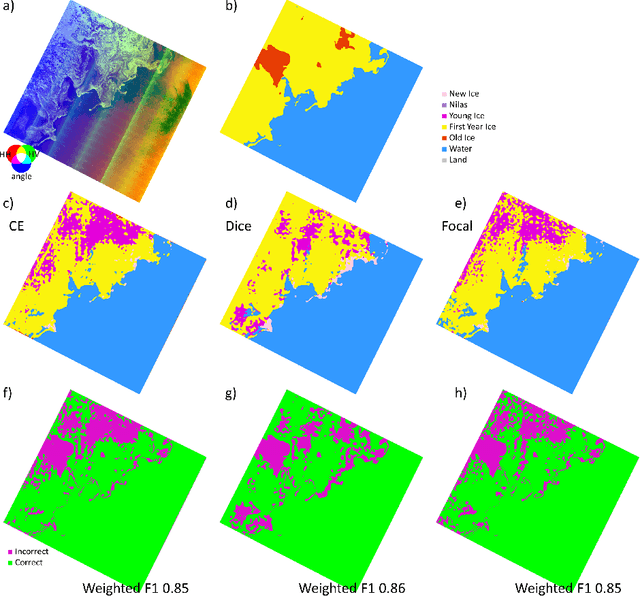Comparison of Cross-Entropy, Dice, and Focal Loss for Sea Ice Type Segmentation
Paper and Code
Oct 26, 2023

Up-to-date sea ice charts are crucial for safer navigation in ice-infested waters. Recently, Convolutional Neural Network (CNN) models show the potential to accelerate the generation of ice maps for large regions. However, results from CNN models still need to undergo scrutiny as higher metrics performance not always translate to adequate outputs. Sea ice type classes are imbalanced, requiring special treatment during training. We evaluate how three different loss functions, some developed for imbalanced class problems, affect the performance of CNN models trained to predict the dominant ice type in Sentinel-1 images. Despite the fact that Dice and Focal loss produce higher metrics, results from cross-entropy seem generally more physically consistent.
 Add to Chrome
Add to Chrome Add to Firefox
Add to Firefox Add to Edge
Add to Edge